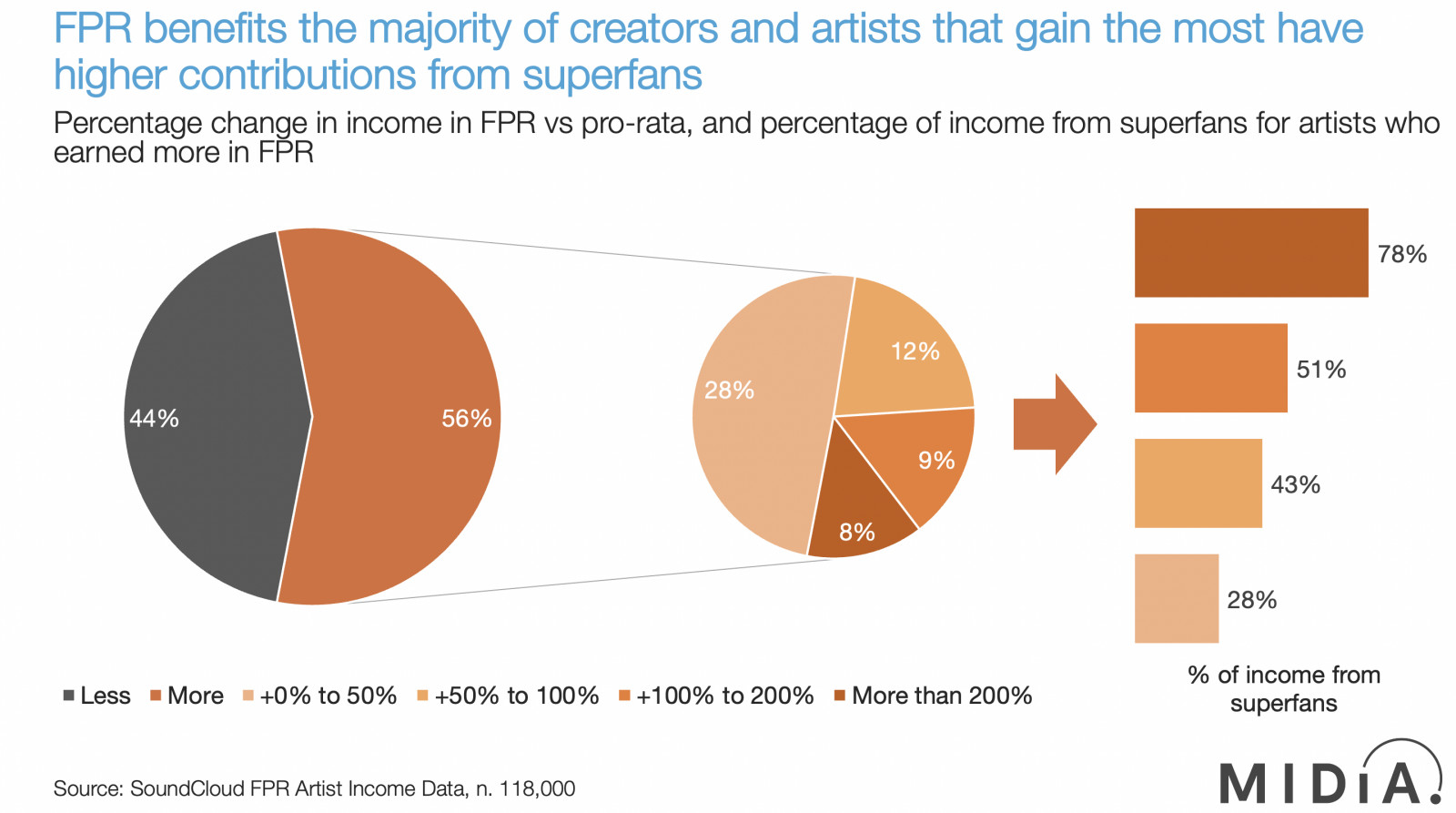Changing streaming’s royalty model will unlock a new music economy


It has been an excellent year for the music industry as it enters a new era of growth. While streaming has been at the heart of this growth, there is an underlying tension between platforms and the artists that they depend on. Of course, streaming income is at the heart of this tension, but it is not only what streaming services are paying - it is also how they are paying.
Most streaming services operate a pro-rata model, which, at a simple level, pools the money generated on a platform and pays out to artists by their share of total streams. In this model, fans end up paying for the most popular artists whether they listen to them or not. Many artists feel that the value of their fans is lost in this model. A fan could spend all of their time streaming a handful of artists, but the value of that fan’s subscription will not make it to them - creators are still paid fractions of a penny per stream.
A model to capture the value of fans
Last year, SoundCloud took a step towards a new model: Fan Powered Royalties (FPR). The model is also known as the user-centric royalty model. What this means, in heavily simplified terms, is that fans only pay for the artists they listen to. In this model, the handful of artists listened to by that fan can capture the whole value of that fan, turning those stream rates into a payout that reflects their fair share of a fan’s total consumption.
Studies on the user-centric model have usually been done from a theoretical and / or restricted geographical view - until now. MIDiA has authored a white paper analysing the real-world data generated from 118,000 artists who have been receiving Fan Powered Royalties on SoundCloud for almost a year. What artists get paid is certainly interesting: more artists are moving up into higher income brackets, with increases in $100-$1000 (+10.2%), $1,000-$10,000 (+9.2%) and over $10,000 (+1.9%). This reflects a general trend toward FPR remunerating mid- and long-tail artists better than pro-rata, meaning that most artists benefit from FPR.
However, what is particularly interesting is how artists are getting paid. FPR splits an artist’s fans into tiers based on how much they contribute per month. At the top are superfans who typically make up 1-2% of an artist’s fan base and contribute over 10¢ in a month towards an artist. Superfans are the difference maker, as the artists with the most significant share of superfans made the largest gains in the switch from pro-rata to FPR.
Featured Report
Music catalogue market 2.0 Bringing yesterday’s hits into the business of tomorrow
The music catalogue acquisition market bounced back from a slightly cooled 2023 with a new fever in 2024. What is being bought is changing, however, as investors look to diversify their portfolios and uncover new growth pockets in an increasingly crowded market.
Find out more…Superfans change the game
As mentioned earlier, the true value of fans to specific artists is too often lost in the pro-rata model. FPR demonstrates how much artists with larger audiences of superfans can be missing out. For artists to simply double their income compared to pro-rata, they need an average of 2-3% of their total audience to be superfans. To triple their income the amount of superfans they need as a % of their audience is 4-5%. The change in income continues to rise with the % of superfans, with some artists even seeing an average increase in income by more than 12x, with over 20% of their audience consisting of superfans.
By looking at superfans, we can also see how dependent artists are on a small share of their fans, as well as how FPR helps reward them for these devoted fan bases. For the artists who earned more in FPR than in pro-rata, superfans consisted of only 2% of their audience but contributed 42% of their total income. With such a small share of fans now able to contribute to such a large amount of income, FPR unlocks something that is lost in pro-rata: the value of fandom.
A new economy based on fandom
Streaming services have long demanded more output from creators. The problem is that this too often does not give artists enough direct commercial return on their investment. In pro-rata, what matters to income are the streams. This means that you earn more by being on mainstream playlists, by shortening your tracks, and by feeding into the demands of streaming services for “continuous engagement” by prolifically releasing music. The pressure of this environment incentivises streaming fraud, where artists pay for streams in order to get ahead of the competition.
Artists no longer need to play this game in FPR, when what matters to an artist’s income are the fans, in particular superfans. The FPR environment incentivises artists to build fan bases that are loyal to them by being different, standing out from the crowd and providing them with something they cannot get anywhere else. This will change the way music is made and released on SoundCloud, now that there are deeper incentives to build and participate in niche communities. This is not simply an opportunity for niche artists in niche genres. We have seen superstars, collectives, labels, folk singers, rappers, and essentially creators across the whole spectrum win in FPR. The difference is their engagement with superfans in their fan bases, something which presents the biggest opportunity to superstars who have the largest number of superfans but the smallest share within their fan base.
FPR goes beyond what artists get paid by providing insight into superfans. MIDiA’s study has been done over a time period where artists have largely gone about business as usual. FPR becomes even more valuable when artists can see and build deeper relationships with the fans who generate the most income. Furthermore, FPR reveals the tier of fans who have the potential to become superfans, essentially unlocking a funnel toward super fandom. This is only the beginning of FPR on SoundCloud and it is more than a royalty model. It is the key to a future on the platform that will enable a music economy based on the true value of fans.
See MIDiA’s white paper on Fan Powered Royalties here

The discussion around this post has not yet got started, be the first to add an opinion.